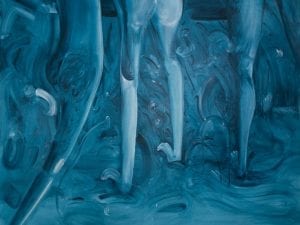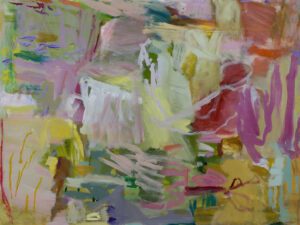Carmen Selma is a Spain-based painter. Memory is one of the fundamental pillars of her work. She has a particular interest in discovering the past, diving into it to try to understand the present. She believes that we cannot completely dissociate ourselves from the context in which we live, just as we should not dismiss the past. We catch up with the artist to discuss the influence of personal and universal narratives within her paintings.
A: Context plays a huge role within your works; could you discuss how history and personal narratives influence the pieces you create?
CS: For me, life and painting are inseparable. In order to begin my paintings, I followed black and white photographs – first my family’s pictures and then the ones found in markets or flea markets. To me, these pictures represent the individual and collective memory. They allowed me to dig deeply into people’s expressions and at the same time, their customs and traditions. They allowed me to determine a specific time; painting allowed me to scrutinise the world.
A: Why do you think that memory is such an important notion and how does it feed into your compositions?
CS: Amongst all the benefits that delving into memory has, there is one in particular that prevents us from future danger. Memory can teach us to improve our behaviour because it is capable of showing the mistakes that have been made as an individual or as a part of a society.
Therefore, I think that memory is a powerful and preventative weapon, but it is also extraordinarily reflexive: we are able to discover events that we were not aware of. These events can change the course of our lives, and in extension, the course of history. Memory, when used as a tool, can cause evolution in society and culture.
A: Do you think that identity is tied to memory, and if so, is this something that has also inspired your works?
CS: Yes, I think that making memories helps us to create our own identity, whilst at the same time not isolating us from the rest of the world. The approach I take within my works is a reflection on memory; I believe that viewers can access the artwork through contemplation in the present moment.
I found inspiration not only in this transportation through time, but in the Spanish Civil War and the subsequent Franco dictatorship. I believe it is something still close to the surface in society, and still a relevant issue. What I want to say is that the basis of this work is the connection between the past, present and future, a connection that can take place within any situation, either here, or in border countries or even in the self-controlling states where women do not have the right to go out alone in the street or show her eyes in public.
A: Why do you use painting as a manner of transmitting the importance of memory?
CS: We live in an apathetic era where we are constantly invaded by visual distractions. The majority of us are unfocused, trapped in a whirlwind of stimuli that takes us from one world to another, like a leaf blowing in the wind. These stimuli are, however, empty. They push us into the consumerist mechanisms of capitalism. Therefore, I see painting as a protest; I rebel and deny letting myself be devoured by these other stimuli.
A: How are the issues within contemporary society also present within your works, for example feminism and digital media?
CS: However unbelievable it may seem, the feminist struggle is still needed in contemporary society. In my recent works I replaced the vertical position of rigid bodies with girls, boys and women lying on the floor. Bodies that sometimes are without life stranded on the beach, in the forest or the pavement. These images are continuously materialised in mass media. However, we tend to think that it happens far away from us but what I fear the most from nowadays images is that they are the same pictures from the wars in the past. I ask myself whether something has changed.
With these new works, what I try to do is change the order but keep the same message: past, present and future are transformed into the present. I used to paint scenes from the past in order to talk about the present, but now I paint present scenes to lay out the question whether we have evolved or not.
A: How has your style developed?
CS: Painting, as I said earlier, allowed me to see the world in detail. I found the best way to do this was through the expressionist or neo expressionist style, with the human figure as the main character. I see every painting as mean of attracting attention. But in my latest works the verticality of the characters has been replaced by the horizontal: bodies lying down, victims of the violence that surrounds us everywhere. The technique that I use mainly is oil on canvas. As time passes, I see this technique as more and more complex; a few years ago I was able to finish a picture faster, today the painting requires me more time and more thought.
A: How does the use of colour, texture and perspective bring to light all of the other underlying factors of your work?
CS: Colour, texture and perspective are the tools to construct a picture. Depending on the way in which we use them, the meaning of the painting will be one or the other. For myself, the application of paint is always visible: it appears in each brushstroke mixed on the palette, but also on the canvas. Through colour I can illuminate the subject. I use vivid colors and strong contrasts that exaggerate tragic scenes because the life is like that: violently contrasted.
Find out more about the artist: www.carmenselma.com
Credits:
1. Carmen Selma, Serie Vencidos (2). (2016). Oil on Canvas. Courtesy of the artist.





